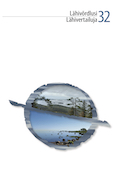Sooliselt markeeritud sõnad eesti spordiuudistes
Researchers in feminist linguistics have hypothesized that language use reflects gender relations and is involved in the reproduction of various gender stereotypes, which can be projected, for example, in lexical gender marking. In this article I looked at gender marked vocabulary that appeared in the sports news published from January to March 2020 in the Estonian web portals Delfi and ERR. My aim was to look at the frequencies of gender marked compounds and to find out which gender-specific compounds are used in the sports context. The results showed that there was a big difference between the frequencies of compounds ending in this or that gender-specific suffix, see, e.g., the lemmas with -man and -woman: compounds referring to male athletes accounted for up to 95% of the observed words, while for compounds referring to women the rate was only 5%. Language reflects the popular understanding of traditional gender roles in society. As men have been involved in more occupations, as far as sports is concerned, the use of -man-compound occupational nouns has taken root in Estonian language for traditional reasons. However, among the compounds beginning with man- or woman-, words referring to women were more dominant, accounting for up to 60% of the observed words. This indicates that it is often necessary to use a special suffix to denote a female, because the basic meaning of the word is assumed to refer to a man. Therefore, since -man-compounds are more lexicalized, a more productive way to denote a female in Estonian is by using woman-compounds. It could be argued that this technique seems to be more natural and convenient for language users. A comparison to texts from an earlier period (using Estonian Reference Corpus 1990-2008) showed that there has been a slight increase in the use of gender marked words. Feminist language planning has not yet been much of a discussion topic in the Estonian language. It is thus clear from these results that even though Estonian does not have grammatical gender, which makes it seem a gender-neutral language, gender inclusion is still largely absent here while the traditional approach to gender is preserved.
More...
